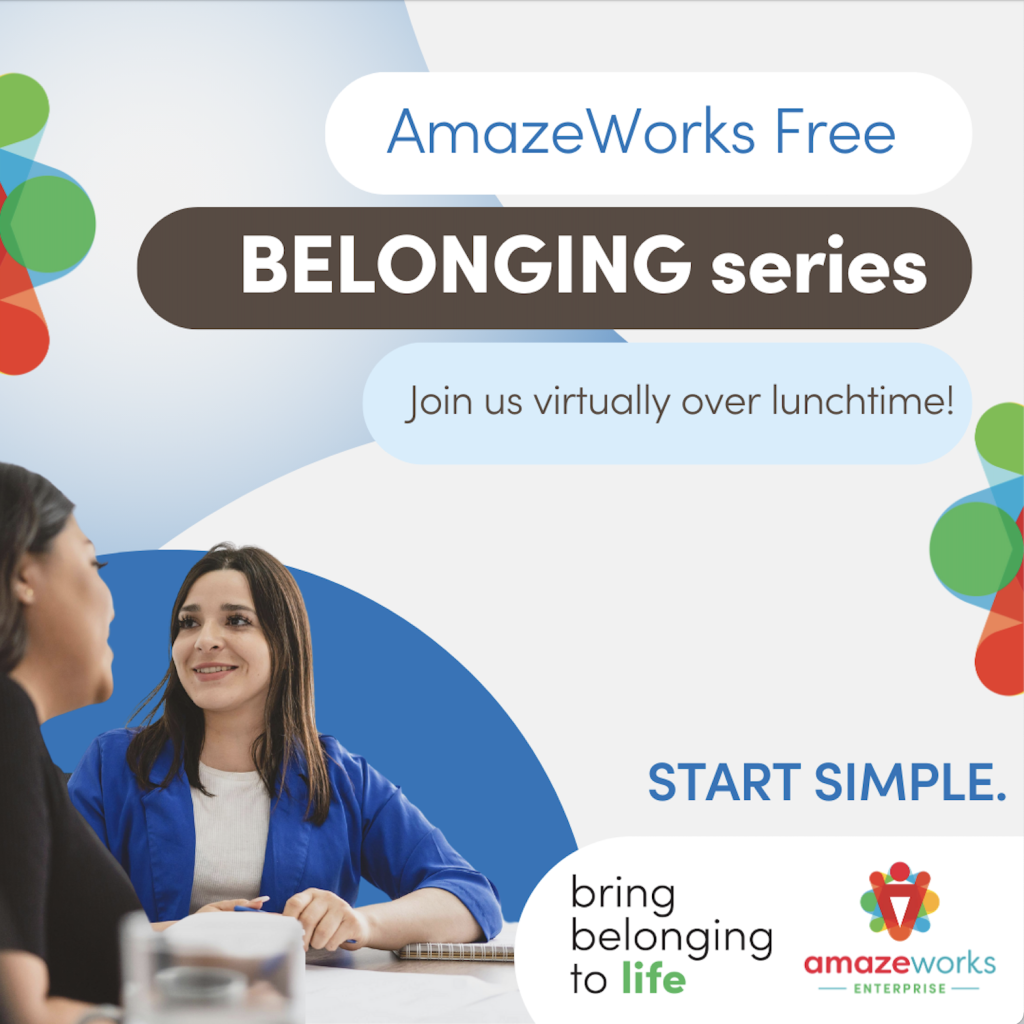“Trust is the glue of life. It’s the most essential ingredient in effective communication. It’s the foundational principle that holds all relationships.”
~Stephen Covey
In Volume 4 of The Belonging Brief, we’re exploring the fourth AmazeWorks Condition for Belonging: relationships.
Relationships are a driving factor in creating cultures of belonging, increasing our engagement and ability to thrive as individuals and organizations. Trust is core to creating meaning in our relationships, forming when we feel fully seen, valued, and treated fairly.
In this edition, we’re examining how identity and bias impact our relationships and how to create more expansive workplace communities. Inside, you’ll find:

Trust is an essential component of relationships. But with whom are we most likely to build that trust?
As humans, we have a tendency to connect with others who share similar backgrounds, beliefs, and interests. This is called an affinity bias. We are more likely to extend empathy to, cooperate with, and trust people who look, think, or act like us.
Affinity bias can also show up as unconsciously seeing people with different backgrounds, beliefs, and interests as less favorable or trustworthy. Despite our intentions to be objective, hidden biases can impact workplace culture, often driving leaders and managers to favor those who share similar attributes or backgrounds in hiring and promotion decisions.
Research shows that our preference for the familiar can hinder our creativity and close our minds to new ideas and perspectives. That means our affinity bias not only impacts our professional relationships, but also limits the potential of our organizations.
Our proximity to people with different identities and experiences does little to form meaningful relationships. Living in a racially diverse neighborhood or working on a diverse team doesn’t automatically create trust. Building meaningful relationships across differences requires regular, intentional, and authentic communication and support.

Let’s further unpack how affinity bias may impact our relationships.
Research shows that people tend to empathize most with those who share many identities with them, often unconsciously. This exercise provides an opportunity to reflect on our inner circles. Whose perspectives are you seeing the most closely? What voices are absent in your social network?
Instructions:
Reflection Questions:
Adapted from The European Wergeland Centre

Historically, Target has been a corporation committed to outwardly supporting LGBTQ+ identities through their policies and merchandise. So when Target removed items in their 2023 Pride collection in response to backlash from anti-LGBTQ+ groups, many customers felt betrayed.
Target also prioritized supporting Black communities in the aftermath of George Floyd’s murder. In 2020, they started developing intentional partnerships with Black businesses and providing scholarships for HBCUs. But after our current administration targeted Diversity, Equity, and Inclusion initiatives, Target halted their Racial Equity Action and Change (REACH) program that supported this work.
Target’s shift in values sends mixed messages about who they want to be in relationship with.
Message #1: We value our Black and LGBTQ+ customers, and our policies reflect that.
Message #2: That support may not hold when the political climate shifts.
Trust is an essential component of relationships and comes when we are fully seen, valued, and treated fairly by others. When our organizational actions contradict our words, community takes notice and responds. As a result, Target is facing boycotts, partnership breaks, and falling short of earnings projections.
As an organization, how can you ensure your community feels seen, heard, and valued in your words and your actions?

Is your organization truly ready for culture change?
This FREE belonging webinar “Culture Transformation & You” explores what it takes to prepare for meaningful organizational shifts using various change models. Participants will reflect on their organization’s readiness, strengths, and challenges across key areas of change.
Walk away with a clearer sense of where you are in the journey, your own role & influence—and what it takes to move forward.
Date: Wednesday, July 9
Time: 12:00-1:00 pm CT
RSVP: Reserve your spot here!

AmazeWorks Education uses storytelling to bring belonging to life across identities. Stories activate our brains in a way that facts don’t, driving connection and increasing our capacity for empathy.
Storytelling is a powerful tool for building relationships. When we hear someone’s story, we begin to see them more fully. We find common ground. And when people feel connected to others, they engage more deeply in their work and communities.
Storytelling can bridge differences and create stronger relationships in any setting. Entrepreneur and podcaster Santosh Kumar offers the following advice on how to use story as a tool for connection:
Apply these lessons to your team culture. Use storytelling to build relationships within your organization. Invite colleagues to share favorite memories, hobbies, or moments when they overcame a challenge. These personal stories create pathways for deeper understanding, strengthen team trust, and foster a culture of belonging.